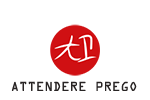Creating Your Own Form
The Path of Harmony and Freedom – Understanding Principles and Creating Your Own Form
Principles of TaiJiQuan:
some of you keep asking me whether it’s better to practice the XinShen form that I teach, the Chen-style TaijiQuan, or perhaps the Yang-style TaijiQuan. I constantly reiterate to everyone that these forms are all beautiful and useful when practiced correctly. Correct practice doesn’t concern perfection and precision of execution, but rather understanding why these forms exist and grasping the true meaning of TaiJiQuan.
Why do we need a form to free ourselves from a mental cage and to liberate our spirit and awareness? Aren’t we already trapped by forms and patterns in our minds? The difference lies in awareness. It is the practitioner, and especially the master, who makes the difference. Even if you practice the Chen-style form, considered by many to be the best form of TaiJiQuan, if you have an inadequate master and are slow to comprehend, you will still have many gaps. However, if you learn FangSong (“relaxation”) and use YiNian (intention and mental power) correctly, even a single movement of TaijiQuan will make you extremely strong and in excellent health, and you will be able to say that you have understood the principles of TaiJiQuan.
TaijiQuan is not just a physical movement or a motor pattern, a “taolu,” but it is a work of the mind that governs the body. If you learn this “work of the mind,” any form can transform into a “non-form” that still reflects the principles of the form.
If you learn the principles and make them your own, you will do TaijiQuan in every movement you make because you will respect the principles of Yin Yang and the 5 elements.
The form itself is only a suggestion of movement aimed at allowing you to express yourself to the fullest and freely in the universe. The form serves to reach the “non-form” and not to create further mental constraints and prisons for the spirit.
Once you learn the principles of TaijiQuan, you can create your own TaijiQuan form, and you will no longer be bound to follow the path of other masters (such as Chen or Yang). It’s like learning to play the piano or the guitar; at first, you study the music written by others, but then, once you understand the principle, you can write your own music that comes from within you.
Therefore, to learn the principles of TaiJiQuan, the form is of great help because it offers you the experience of wise masters experienced in QiGong in correct spatial movement. It is also important to know QiGong because alchemical work is fundamental. We cannot have distinct Yin and Yang if we haven’t first cleansed the meridians and created ZhenTi (without ZhenTi, there is no BaoFa, the fundamental force of strikes in internal arts). Constant practice towards personal growth is extremely important for deeper and deeper quality of TaiJi.
Taiji and Conscious Intention:
The concept of action and non-action, along with fluidity in following life, is a central aspect of Taoism. In the context of TaiJiQuan, practice focuses on training the mind and developing deep awareness. The form itself becomes a means to overcome mental limitations and to achieve a state of harmony and free flow with the universe. When we understand the principles of TaiJiQuan, we become capable of creating our unique form, freeing ourselves from predefined patterns and following our individual path. Through the integration of relaxation and mental intention, we can discover astonishing inner strength and optimal health. The practice of QiGong and the cleansing of meridians become essential elements for balancing our inner Yin and Yang, enabling us to fully express the fundamental force of internal arts. In this way, Taoism and TaiJiQuan offer us a profound perspective on life, inviting us to flow with grace and wisdom along our journey.
M. Davide De Santis

